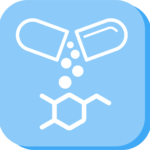Mihovilovic Lab
Research Topics:
- Research at the chemistry-biology interface.
- Development and utilization of wild-type microorganisms and genetically engineered whole-cell systems as new tools in synthetic chemistry.
- Design of multi-step biocatalytic and chemo-enzymatic reaction cascades.
- Proliferation of the “green chemistry” concept with respect to sustainability, atom efficiency, and environmentally benign synthetic methods.
- Development new bioactive compounds for modification of cell differentiation
- Lead-optimization of natural-compound derived GABAA ligands
- Lead-optimization of natural-compound derived anti-inflammatory agents
- Continuous flow chemical processes.
- Utilization of chiral intermediates obtained via biocatalytic methods in natural compound total synthesis.
- Development of platform technologies for renewables valorization and circular economy.
- Exploitation of metal-assisted synthetic methods such as cross-coupling reactions (Negishi, Suzuki, Stille, Kumada), CH-activation, dircted ortho-lithiation, cyclization reactions (Zn-mediated [4+3] cycloaddition, Pauson-Khand cyclization), and metathesis techniques (ring-opening metathesis, ring-closing metathesis).
Marko was born in Steyr, Upper Austria, Austria in 1970. After the A-levels in Linz, he started to study Technical Chemistry / Organic Chemistry in 1988 at the Vienna University of Technology (VUT), Vienna, Austria. His diploma Thesis was entitled ‘Synthesis of Thieno[2,3-d]thiadiazole Derivatives’ and was supervised by Prof. Peter Stanetty. He started his PhD thesis in 1994 (‘Synthesis of Azasteroid Partial Structures as Potential Inhibitors of the Ergosterol Biosynthesis’) again in the group of Prof. Peter Stanetty and finished this work in June 1996. From 1994-1998 he was research assistant at the Institute of Organic Chemistry (IOC). He was then on two postdoctoral stays as Erwin Schrödinger Fellow of the FWF (Project no. J1471-CHEM (‘Designer Yeasts – New Bioreagents in enantioselective Synthesis’) with Prof. Margaret M. Kayser University of New Brunswick, Saint John, N.B., Canada and Prof. Jon D. Stewart University of Florida, Gainesville, Florida, USA. From 1999-2003 he was again university assistant at the Institute of Applied Synthetic Chemistry (IAS, former IOC), VUT. In November 2003 he received his Habilitation (venia docendi) in the field of Bioorganic Chemistry and was promoted to ‘University Dozent’ (Assistant Professor) at the IAS, VUT. From March 2004 till January 2014 he was Associate University Professor at the IAS, VUT. In May 2008 he declined the appointment to Full Professor in Bioorganic Chemistry at Johannes Kepler University Linz, Austria. From 2009 up to now he coordinates the Graduate School Program AB-Tec (Applied Bioscience Technology) at Vienna University of Technology. Since January 2013 he is the Head of Institute at the Institute of Applied Synthetic Chemistry (Vienna University of Technology, Vienna, Austria). In February 2014 he was appointed as Full Professor and Chair for Bioorganic Synthetic Chemistry. He is Dean of the Faculty for Technical Chemistry, TU Wien since 2020.

Marko Mihovilovic
Univ.Prof. Dipl.-Ing. Dr.techn.
Dean Faculty of Chemistry

Connect
- +43 (1) 58801 - 163615
- marko.mihovilovic@tuwien.ac.at



